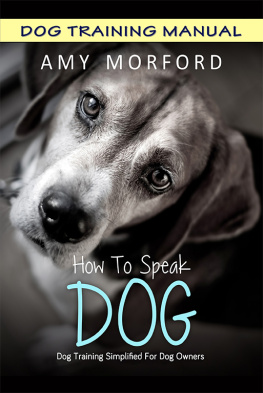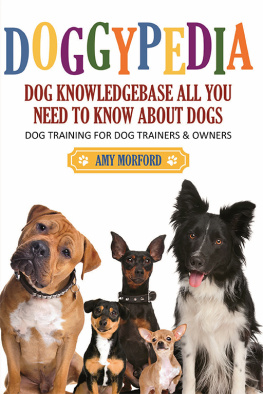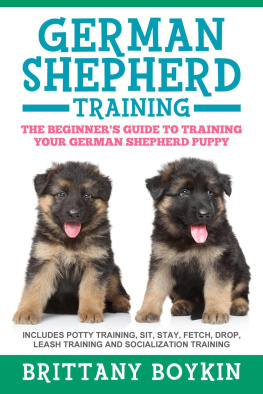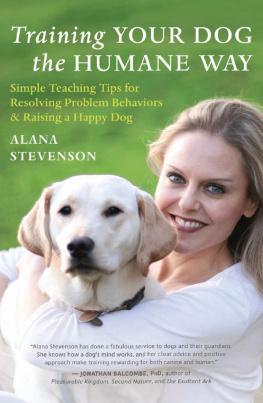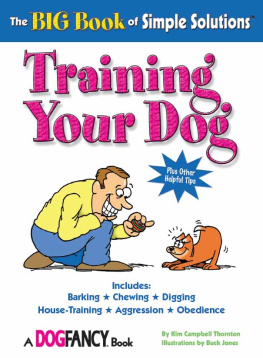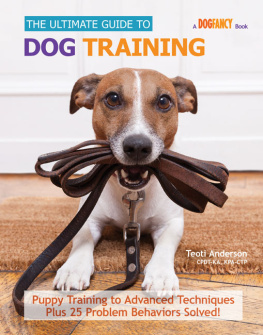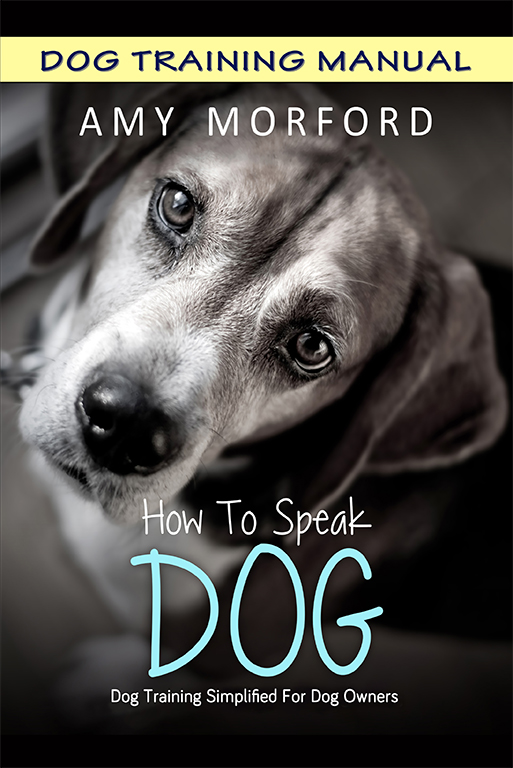How to Speak Dog
Dog Training Simplified for Dog Owners
Amy Morford
Copyright 2014 by Speedy Publishing LLC
All rights reserved. No part of this publication may be reproduced, distributed or transmitted in any form or by any means, including photocopying, recording, or other electronic or mechanical methods, without the prior written permission of the publisher, except in the case of brief quotations embodied in critical reviews and certain other noncommercial uses permitted by copyright law. For permission requests, write to the publisher, addressed Attention: Permissions Coordinator, at the address below.
Speedy Publishing LLC (c) 2014
40 E. Main St., #1156
Newark, DE 19711
www.speedypublishing.co
Ordering Information:
Quantity sales; Special discounts are available on quantity purchases by corporations, associations, and others. For details, contact the Special Sales Department at the address above.
-- 1st edition
Manufactured in the United States of America
PUBLISHERS NOTES
Disclaimer
This publication is intended to provide helpful and informative material. It is not intended to diagnose, treat, cure, or prevent any health problem or condition, nor is intended to replace the advice of a physician. No action should be taken solely on the contents of this book. Always consult your physician or qualified health-care professional on any matters regarding your health and before adopting any suggestions in this book or drawing inferences from it.
The author and publisher specifically disclaim all responsibility for any liability, loss or risk, personal or otherwise, which is incurred as a consequence, directly or indirectly, from the use or application of any contents of this book.
Any and all product names referenced within this book are the trademarks of their respective owners. None of these owners have sponsored, authorized, endorsed, or approved this book.
Always read all information provided by the manufacturers product labels before using their products. The author and publisher are not responsible for claims made by manufacturers.
Digital Edition 2014
WHAT YOU WILL LEARN IN THIS BOOK
How This Book Will Help You and Why
You Can't Train Your Dog If You Don't Speak Dog!
How to Speak Dog provides a general overview of dog behavior before specifically focusing in on training solutions for six of the most common dog misbehaviors: aggression, digging, nuisance barking, fear biting, submissive urination, and separation anxiety.
Author Amy Morford understands that not everyone understands "dog talk" so she kicks off by introducing basic obedience training methods. She explains each training situation by breaking it down into chronological micro-steps.
How to Speak Dog is as close as one gets to hiring a dog trainer without actually hiring one. The training process has been made as simple as possible, with six chapters written in "plain English" to eliminate ambiguity so the training process is easy and less stressful for both the teacher and the student.
In addition to covering basic training and the elimination of problem behavior patterns, also discussed is clicker training, crate training methods, and the use of positive reinforcement.
If you've been struggling to resolve problem dog behaviors or just adopted a new dog and want to be sure that your new household member is well-behaved and well-trained, you've got to learn "dog talk."
MEET THE AUTHOR
Amy and Bruno
Amy Morford has over twenty years of dog training experience with companion dogs, sport dogs and working breeds. Amys motivation to write about dogs stems from her love for them and their unbiased loyalty and devotion. Amys goal is to provide helpful, accurate information to assist dog lovers with raising and training a well-mannered, good-tempered, happy, healthy, well-adjusted companion, friend, partner and/or family pet.
Be sure to bookmark and subscribe to DogTrainingPlace.net for articles, tips and tail wagging fun.
TABLE OF CONTENTS
DEDICATION
Hannibal
This book is dedicated to Hannibal, my first German Shepherd and training partner. My knowledge and passion for training dogs would never have developed if it hadnt been for him.
Gone but never forgotten.
CHAPTER 1: BASIC OBEDIENCE TRAINING
Part of being a responsible dog owner is teaching a pet basic obedience commands. A well-behaved dog makes the difference between a dog owner and a good dog owner. Everyone enjoys a well-behaved, well-mannered dog. Teaching your dog basic obedience is a must if you plan to go out in public with your pet. Obedience training will also make visiting your home more enjoyable for friends and family.
Its important that dog owners understand that basic dog obedience training requires a lot of time, repetition and patience. With the right attitude, the training experience will build trust and strengthen the bond between you and your dog.
As an owner it is your responsibility to learn and understand the basic aspects of dog training. This can be accomplished through books, videos, at-home training programs, or structured group or private training classes. Regardless of which learning method is chosen, the owner must implement and follow through with his or her new found knowledge in order for the dog to benefit.
Any dog can successfully learn basic obedience commands. Some dogs and some breeds learn faster than others. Prior to the start of any basic obedience training, the owner should have realistic expectations. No matter how intelligent the dog is, the dog wont learn every command after just a few attempts.
Positive reinforcement is a popular method of training, and it is recommended. Positive reinforcement simply rewards positive and desired behavior through the use of food, toys, verbal praise and affection.
Food is the easiest item to reward your dog with because it can be given in very small amounts and can be carried or concealed in pockets.
Some dogs do not respond well to food. If this is your dog, you need to adjust your training tactics. What makes your dog tick? Is it a particular toy? Find a toy that your dog loves. Put the toy away and bring it out only for training purposes. Implement the toy in your training instead of food.
When setting out for your first training session, it is a good idea to choose a place that doesnt have any distractions (such as other animals or kids). As your dog progresses and regularly responds to commands, it will be important to test your dog by training in places that have distractions.
Remember to keep training sessions short and upbeat. You want your dog to think that training is fun. Always find a way to end the training session with a positive experience for your dog.
Lets start teaching your dog some basic manners. A well-behaved, well-trained dog should respond to some basic commands such as sit, down, heel, stay and come.
Sit
The sit command is one of the most useful and easiest commands you can teach a dog. This is one of the first commands that should be taught. You will need training treats to teach this command.

